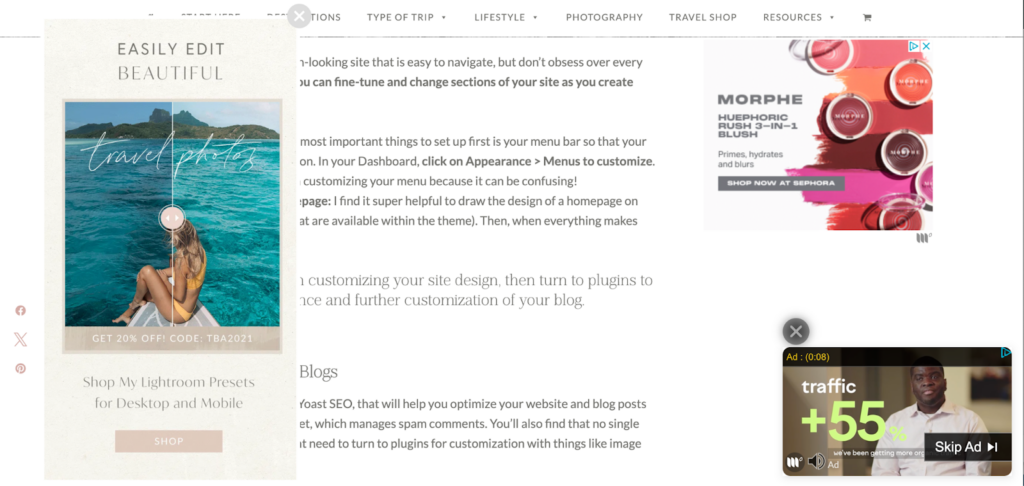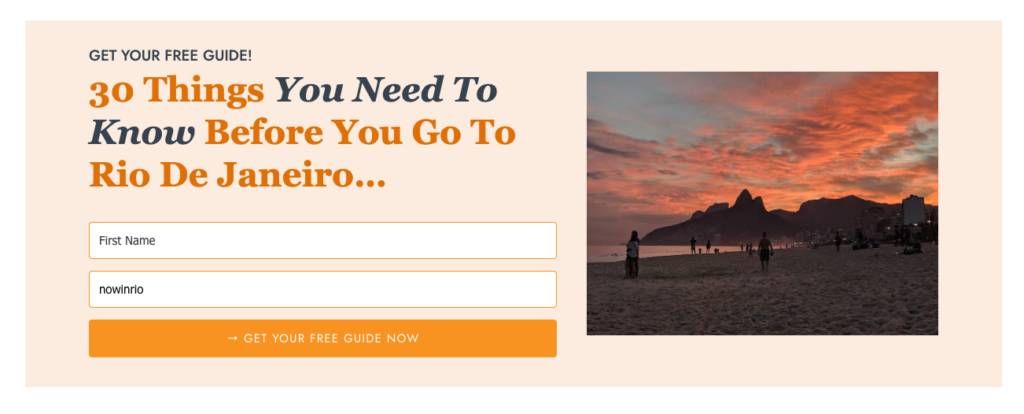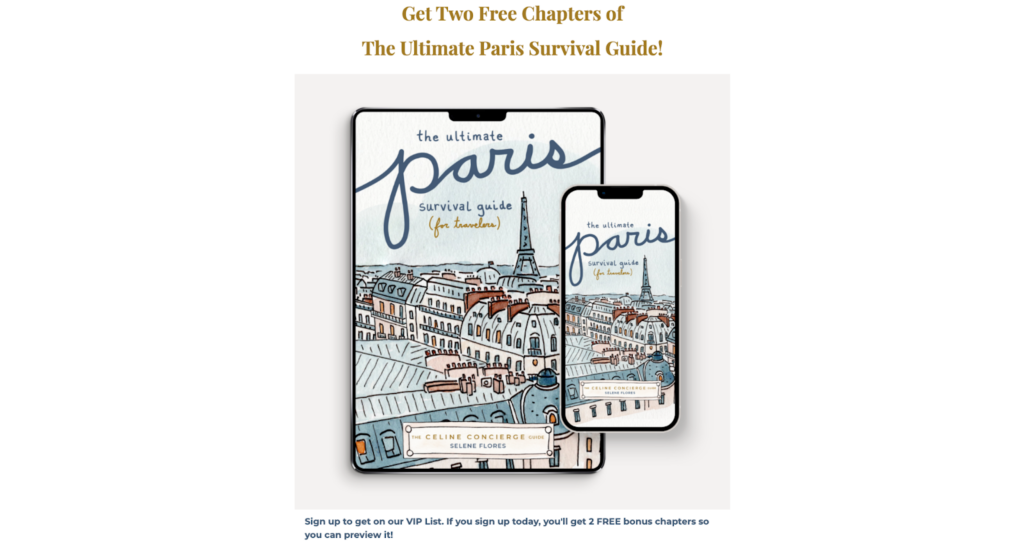Ever feel like you’re sitting on a wealth of knowledge but don’t know how to cash in? Welcome to the world of digital products, which are like magical objects for turning your expertise into gold.
Before discussing the nitty-gritty of how to market digital products, check out our articles on ideas for profitable products and tools you can use to create them. Both posts are packed with inspiration and resources to help you get started.
What is a digital product?
If your typical blog post tends to be bite-sized, digital products are more substantial – and for that reason, you can charge for them. And unlike physical products, they don’t require expenses on storage or shipping.
Popular digital products in the travel industry include ebooks and audiobooks, online courses, personalized itineraries, printable travel journals, and other formats.
Why sell digital products
Digital products:
- Can be sold to unlimited customers without additional production costs
- Help you showcase their expertise and build credibility in their niche
- Allow you to monetize your knowledge while continuing to explore the world
- Give you one more platform for placing affiliate links, potentially increasing your passive income
13 tips to promote your digital products
1. Know your audience
Before developing a marketing strategy, it’s crucial to identify your audience’s pain points and determine whether your goods address their needs.
What is a pain point?
A pain point is a specific problem that your audience experiences. In your niche, this could range from finding affordable deals to managing itineraries efficiently.
How to identify your target audience’s pain points
- Conduct surveys: Use tools like Google Forms or SurveyMonkey to create surveys that ask your audience about their biggest travel challenges. Questions could include:
- “What is your biggest frustration when planning a trip?”
- “Which travel resources do you find most useful?”
- “What digital tools do you currently use to plan your travels?”
- Analyze comments: Pay attention to comments on your blog posts and social media channels. They can help identify what your audience struggles with.
- Get in touch: Sometimes, the best way to understand your audience is to talk to them directly. Consider hosting a live Q&A session or conducting interviews with a select group of your readers.
- Study the data: Tools like Google Analytics can help you understand which content resonates most with your audience. Look at page views and engagement patterns to identify common interests and pain points.
Example: creating a travel guide based on feedback
Let’s say you run a niche blog focused on a specific city. You keep noticing that your readers are commenting on a particular issue they have – say, finding reliable details about car rentals or navigating public transport.
These questions identify a gap that a digital product or guide can fill. By focusing on these pain points, you can offer a resource like a how-to ebook on securing the best car rentals or an overview of the city’s public transport system. Such resources could become must-haves for anyone planning to visit your city.
2. Optimize your website for search engines
If you have your own website, you’ve probably already done your best to make it SEO-friendly. 90% of the work is already done, so what’s next? Keep cranking out that valuable content, and start weaving in mentions of your digital products in posts that already perform well.
For example, if you have a popular blog post about Paris and just finished a new ebook about secret spots there that bloggers don’t talk about, add mentions of it throughout your article.
You can also use tools like pop-ups or call-to-action buttons to guide readers to pages where they can buy your ebook (or any digital offering).

Popular tools like OptinMonster, Sumo, and ConvertKit can help you seamlessly create these pop-ups and landing pages. It’s all about making your audience aware without being pushy and making it simple for them to buy.
3. Leverage your social media audience
Now’s not the time to be shy. If you don’t talk about your products, how will people know they exist? Promote your goods on your existing social media pages. There’s no shame in selling – just do it in an authentic style that feels true to your audience.
Share posts, stories, and reels highlighting your products’ benefits, and use features like Instagram Shopping and Facebook Shops to make purchasing easy.
Authenticity is key, so mix in personal anecdotes, user testimonials, and behind-the-scenes content to create a connection with your audience while subtly showcasing your digital products.
4. Invest in paid ads for broader visibility
Expand beyond your current audience by running targeted ads on Instagram and Facebook. You don’t need to spend much to see results – with well-targeted ads, small budgets can go a long way.
A quick tip: If you’re an iPhone user, boosting posts directly in the app can incur additional fees. Instead, use Meta Business Manager. It’s fabulous and user-friendly, allowing you to manage and optimize your ad campaigns without the extra cost.
5. Get organic traffic on Pinterest
With over one billion travel-related searches annually, Pinterest is an underrated place for bloggers to solve their audiences’ travel headaches with digital products.
Chantell Collins, a Pinterest ads specialist and founder of Pin Advertising, outlined for us how travel bloggers can use Pinterest to promote their digital products effectively:
Understand your audience and their journey
Travelers turn to Pinterest in the early stages of their travel planning, making it the perfect place to get on their radar as they research and book their trips. Understanding the stages of travel planning will help you align your content with people’s needs:
- Inspired discovery: At this stage, travelers are exploring ideas. Create engaging video pins showcasing stunning destinations and unique experiences they may not have considered.
- Decision-making: As they narrow their choices, provide practical and valuable content, such as detailed destination guides and checklists. Offer these resources in exchange for email sign-ups so you can stay in touch.
- Action-taking: When users are ready to book or purchase, offer them digital products – like ebooks, online courses, or printable planners – with tangible benefits like saving time, cutting costs, or having a better experience.
Don’t forget Pinterest keywords
Pinterest users type keywords into the search bar to find inspiration. Think about what your audience would search for, and then include those words in pin titles and descriptions. This will help your pins appear in search results and attract users actively planning trips, so that your digital products remain top-of-mind with a relevant audience.
If you need more help with Pinterest, read our article on affiliate marketing on Pinterest.
6. Build an email list
When was the last time that you changed your email list? When people commit to an email address, it’s theirs for life. This means you’ll always have a direct line to potential customers – unless they unsubscribe (but we’ll do our best to avoid that).
To get people to sign up, offer something valuable in exchange and use a pop-up. (But don’t overdo it – no one likes a pop-up that pops up too much.) It could be a freebie, like a travel guide, packing list, or small ebook. This makes people feel they’re getting something worthwhile in exchange for their email address.

Once you have their email addresses, keep your audience active and engaged by regularly sending valuable content.
Warm them up with tips, stories, and useful information to build a connection. This way, when you’re ready to make a sale, they’ll be more likely to buy from you.
7. Use content marketing
Content marketing all about creating valuable content (wow!) that grabs people’s attention and keeps them returning for more.
Take financial gurus on TikTok. They show their financial trackers in videos while planning their budgets. Viewers get curious and ask, “Where did you get that tracker?!” And it’s usually a tracker that the gurus are actually advertising. They’re selling without really selling, and it’s incredibly powerful.
Apply this technique to your digital product by incorporating it naturally into your content. Show how it solves problems or makes life easier. Your audience will see the value and ask where they can get it, and boom, you’ve made a sale.
8. Partner with influencers to expand reach
Influencers can boost your digital products by showcasing them to engaged followers. But remember, if you’re reaching out to influencers who are more popular than you, they’ll probably wonder, “Why should I do this for you?”
Offer them something valuable in return. This could be free access to your product, a commission on sales, or a feature on your platform. You can also pay them. There are many ways to work with influencers, but make it worthwhile, and they’ll be more likely to promote your product enthusiastically.
9. Give discounts and freebies
Give away a free chapter of your ebook or a sample preset. People love trying before they buy (that’s probably why Costco is so popular), and offering a taste of your digital product can hook them.

Encourage users to check out the free sample and see the value for themselves. Once they’ve had a taste, they’ll be more likely to purchase the full product. Think of it as a little teaser that leaves them wanting more.
10. Bundle digital products
Create packages of your digital products and offer them at a discount. Bundling products increases the perceived value and entices your customers to buy more.
For example, if you have several ebooks, presets, or guides, package them togethere and offer a special price. This way, customers feel they’re getting a great deal, and you boost your sales.
11. Use an online marketplace
Your website shouldn’t be the only place you sell your digital products. You should also list them on platforms like Etsy or Gumroad.

These marketplaces have large customer bases, making it easier for your products to get discovered. You’ll benefit from the platforms’ extensive reach and established trust among customers. Plus, they offer easy-to-use tools for listing and selling digital products.
How many people are on these platforms? Around 500 million people visit Etsy every month, and in 2023, it had around 97.3 million active buyers worldwide. That’s almost more than the number of atoms in the universe! (Well, almost.)
One thing to keep in mind is that these platforms take a percentage of your sales. For instance, Gumroad charges a 10% fee on each sale, excluding payment processing fees. Similarly, Etsy charges listing fees and a transaction fee of 6.5%. So, while they can boost your visibility and sales, be aware of the associated costs.
12. Focus on generating reviews and testimonials
Ever heard of earned media? It’s the buzz you get from people talking about your product organically – think reviews, mentions, and shares. According to Nielsen’s 2021 Trust in Advertising Survey, 88% of respondents trust recommendations from people they know more than any other channel.
Encourage happy customers to leave reviews and flaunt their testimonials on your website and social media to boost your product’s credibility. You can even incentivize people to leave a review by offering a discount code or a little freebie in exchange. This not only encourages more reviews, but also fosters goodwill and repeat business.
13. Partner with other bloggers
Team up with fellow travel bloggers for some joint promo magic. By partnering, you can tap into each other’s audiences and widen your reach. Share each other’s content, give shout-outs, and collaborate on cool projects. It’s a win-win that helps you grow your follower base and boost those digital product sales.
The best ways to promote digital products
Now that you’ve got these killer strategies to promote your digital products, it’s time to put them into action to grow your business. Try these tips, and let us know how it goes in the comments below. Your experiences can inspire and help others in the community.
If you need more ideas, check out our article on 15 ideas for profitable digital products and this one on handy services for creating them.
Happy promoting!





